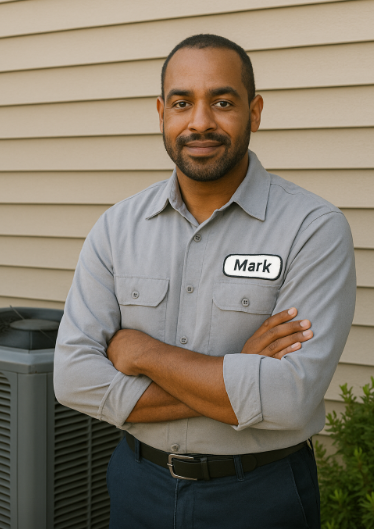If your outdoor AC condenser has started making clanking noises, leaking refrigerant, or just stopped cooling on a hot day, you’re not alone. Replacing an outdoor condenser is one of those urgent, inconvenient purchases every homeowner dreads. My goal here is to break down home AC condenser replacement cost, HVAC condenser replacement cost, and how much a new AC condenser costs — the real numbers, what drives costs, and how to make smart decisions. I’ll also show how the Goodman 3-Ton 14.5 SEER2 R-32 bundle, featured on The Furnace Outlet, fits into the picture.
Typical Cost Ranges
-
Condenser-only replacement (unit + install): $1,200–$4,200 depending on size, brand, and labor.
-
Average homeowner experience: $2,500–$5,000 for condenser replacement when installation, line set, and labor are included.
-
Full matched system replacement: $8,000–$14,000+ for condenser + indoor coil/air handler + install.
These numbers help you benchmark quotes and understand what’s reasonable. According to HomeAdvisor and Angi, most homeowners will fall into the $2,500–$5,000 range for a typical condenser swap.
What Drives Condenser Replacement Cost
-
Equipment:
-
Brand, size, SEER rating, and refrigerant type all impact price. A 3-ton condenser costs more than a 2-ton unit due to bigger compressors and more materials. Modern units like the Goodman 3-Ton 14.5 SEER2 R-32 use R-32 refrigerant, which is more efficient and future-proof.
-
-
Labor/Installation Complexity:
-
Ground-level condenser swaps are simpler and cheaper. Hard-to-reach locations, new line sets, upgraded electrical, or permit requirements add to labor costs.
-
-
Scope of the Job:
-
Condenser-only replacement: Swapping just the outdoor unit is cheaper.
-
Matched system replacement: Replacing indoor coil or air handler with the condenser ensures optimal efficiency and warranty compliance.
-
For detailed installation cost ranges by system type, check HVAC.com’s guide.
Replacement vs. Repair
Before committing to replacement, make sure it’s actually the condenser:
-
A failing capacitor, contactor, fan motor, or clogged coil can mimic condenser failure.
-
Age matters: condensers over 10–15 years old with major issues often warrant replacement.
-
Consider efficiency and refrigerant: older systems with phased-out refrigerants may require replacement anyway.
If a technician says “the condenser coil is bad,” you can either rebuild the coil (expensive) or replace the outdoor unit — often the more cost-effective, longer-lasting choice.
Typical Line Items on a Replacement Quote
A good quote will break out:
-
Outdoor condensing unit (brand, model, tonnage)
-
Labor for removal & installation
-
Line set replacement (if necessary)
-
Refrigerant charge
-
Electrical work
-
Pad/mounting
-
Permit & disposal
-
Indoor coil compatibility check
-
Warranty & registration
Avoid one-line quotes — always ask for itemization to prevent surprise costs.
How the Goodman 3-Ton 14.5 SEER2 R-32 Bundle Fits In
The Goodman bundle is a matched system that includes the condenser and indoor coil, which:
-
Reduces mismatch risks that cause efficiency problems
-
Uses R-32 refrigerant for future-proofing
-
Provides a strong value for mid-sized homes compared to premium brands
You can still replace just the condenser if your indoor coil is compatible, but using a matched bundle ensures long-term performance and warranty coverage.
Realistic Replacement Scenarios
Scenario A — Simple Condenser Swap
-
Small 2-bedroom home, condenser fails, indoor coil fine
-
Cost: $1,200–$3,000
Scenario B — Condenser + Line Set + Pad
-
Older system, lines show wear
-
Cost: $2,500–$5,000
Scenario C — Matched System Replacement
-
Outdoor condenser fails, indoor coil/air handler old
-
Cost: $8,000–$14,000
Scenario D — Premium Upgrade (Variable-Speed, High SEER)
-
Ultra-efficient, variable-speed compressor
-
Cost: $10,000–$20,000+
For more detailed ranges and examples, see This Old House.
When to Replace the Condenser
-
Unit is 10–15 years old and has major compressor failure
-
Total repair costs exceed 50% of replacement cost
-
Indoor coil/air handler is old or mismatched
-
You want higher efficiency and lower energy bills
Tips to Save Money Without Sacrificing Quality
-
Don’t replace the condenser if a single inexpensive part can fix the problem
-
Consider a matched bundle if indoor components are old
-
Ask about financing, rebates, or seasonal promotions
-
Schedule preventive maintenance to catch small issues early
What to Expect on Replacement Day
-
Old condenser removed, refrigerant reclaimed, electrical disconnected
-
New pad and condenser installed
-
Line set checked or replaced, system vacuumed and charged
-
Airflow and performance tested
-
Permit inspection completed if required
Full matched system installations or duct modifications may take longer.
Final Recommendations (Mark Callahan’s Advice)
-
Diagnose first — repair may be cheaper for newer units.
-
Replace condensers 10–15 years old for reliability and efficiency.
-
Consider matched system replacement if indoor components are old. The Goodman 3-Ton 14.5 SEER2 R-32 bundle is a strong, cost-effective option.
-
Always request itemized quotes and compare at least two bids.
-
Don’t pick purely on price — installation quality, proper refrigerant handling, and correct matching matter most.
For a detailed guide to AC replacement costs, check out Modernize.







